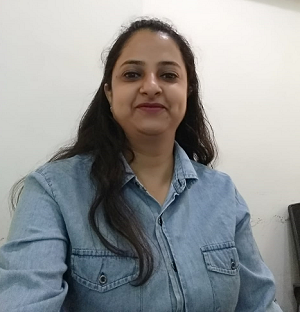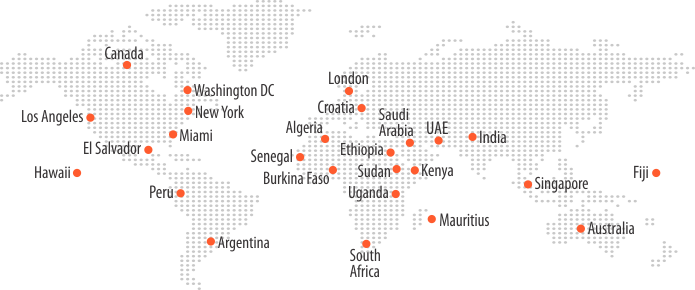SMS & IoT – New Marketing Opportunities for your Business

Today’s highly connected world requires highly educated people at all levels within businesses and society. People and machines can collaborate, share real-time data, solve challenges, and accomplish great things with the right combination, such as infrastructure, technology, and skills.
The business world has been transformed by super-fast connectivity and new smart devices that utilize IoT capabilities. With the rise of 5G and cloud technologies, innovations are happening globally at an unprecedented rate, creating a new ecosystem for connectivity and completely transforming global economies as it creates a brand-new paradigm for business automation and connectivity in every industry.
SMS is the most reliable method of communication today. It’s not just a means of communication but can also be an effective marketing source due to its ubiquity and simplicity. The fact is that SMS messaging has evolved for more than 20 years and is still thriving.
This blog will discuss how A2P messaging solutions and IoT together impacted growth, the future of SMS, and its importance for IoT devices to communicate, especially sending critical data notifications and alerts. First, let’s understand what IoT and SMS are.
What is IoT and why is it so Important?
IoT (Internet of Things) is the network of physical devices, vehicles, and other objects embedded with software, electronics, actuators, sensors, and connectivity. It enables these objects to connect, interact, and exchange data with each other over the Internet.
It is a giant network of related things and people, collecting and sharing data about how they are used and built and the surrounding environment. The data transmitted over the IoT can be realized in many ways. Today, more than 7 million devices connect to IoT devices, but the numbers are expected to grow to 22 billion by 2025.
The importance of IoT lies in its ability to connect people, processes, and things. The power of this connectivity is enhanced when data from these devices is analyzed, providing users with the information they need to make decisions that will influence their daily lives. Whether it’s monitoring the temperature of your fridge, knowing that your car is ready for use, or helping farmers to maximize crop yield, IoT has endless practical benefits.
What is an SMS
Texting is the most reliable and safest means to send information. SMS has been around since 1994, when it became a reliable way of communication. The fact is that SMS is still alive and kicking because it is the most built-in way to send and receive text messages today.
SMS is an efficient and cost-effective means for a company to deliver messages, regardless of whether there’s a mobile data connection or not. It is an alternative to voice calling with a landline or mobile phone. The message will remain intact and can be delivered to the recipient’s mobile device or directly into their email inbox, which enables users to receive notifications and messages at their convenience. Consequently, business messaging, also known as A2P (Application to Person), has been booming in the past few years; also, we can see other advanced technologies, such as IoT, deploying it.
Its efficiency has increased significantly with the advent of technology, especially mobile phones and networks. It can be attributed to the fact that it gets delivered within seconds from one place to another, thus making it the most effective means of communication.
Mobile technology has become a crucial feature for IoT developers and enterprises as the world is becoming more connected and automated. Mobile SMS is the only communication channel that works on every cellular-enabled device and every network. Messaging is vital in all data transfer scenarios, whether notification to individual employees or an alert for machines. While A2P messaging are essential to IoT, depending on the use case. For example, a technician needs to hear an alert through their phone or another machine that receives alerts on its display via push notifications. SMS covers every scenario.
Short Messaging Service has been around for decades, but it is coming back with the popularity of mobile devices and the IoT. With over 2 billion users worldwide (and growing), SMS has become a powerful tool. It can also be used to build smart applications for enterprises that want to manage all their operations via SMS.
Why is SMS the Right Choice for IoT?
Global coverage SMS messaging is an integral part of modern life. Today’s world is becoming more connected and automated; SMS is also becoming an essential feature for IoT, M2M developers, and enterprises. The ubiquitousness of 2G, 3G, 4G, and the latest 5G networks enables SMS to reach every corner of the world. These networks are stable and guarantee safe message delivery, which is vital for the IoT.
SMS and IoT have been intertwined for years. It is the only communication channel that works on every cellular-enabled device and every network. Depending on the use case, P2P and A2P messaging are essential to IoT. Whether an alert needs to reach a human being (technician, for example) or another machine via A2A enabled platform, the most important thing is that SMS covers every scenario.
Its trial tests have shown that it can handle billions of messages daily, which is an achievement for any network. SMS is also compatible with the most recent fifth-generation networks, which makes it suitable even for the two billion people who don’t have access to the Internet but might still want to communicate with each other.
Let’s see the benefits of SMS:
Cost-friendly
A2P messaging solution is an increasingly popular means for brands and enterprises to connect with their customers. With the integration of IoT, it would employ bulk SMS messaging to send the data. Such messaging traffic is exceptionally cost-efficient. Hence, brands and enterprises opt for the A2P messaging solution as today’s most preferred means of communication.
High Deliverability
SMS has a 99.9% delivery rate, making it an extremely reliable communication channel for customer service, marketing campaigns, and customer engagement. For example, by choosing a reliable SMS carrier, SMS API provider, or SMS platform vendor (like HORISEN SMS Platform), you can keep delivery rates close to 100%.
The most important advantage of using the HORISEN SMS Platform is that it is built on an SMS gateway platform. This offers high reliability, deliverability, and a flexible and intuitive interface for building custom apps.
Reliable
With the emergence of IoT, it is now more important than ever to employ a secure and reliable channel like SMS as the fallback option for all channels. For example, if there is an electric power outage, SMS will be delivered no matter what kind of handset you have.
Power-efficient
It is necessary to establish a permanent connection to an IP-enabled IoT device. As IoT devices serve as the backbone of our modern society, it is crucial to minimize their power consumption while delivering high-quality collection and transmission of data. A low power state may cause an IoT device to be unable to establish a network connection to its central system. So, SMS technology is a standard protocol used in such cases as it requires almost no power at all, thus helping avoid unnecessary power drain.
The Future of SMS and its Importance for 5G IoT
Today, the world is more connected than ever before, not only for people but for machines and devices too. Some devices and machines can benefit from being connected, but the hardware costs are often so steep that it’s not worth it. So, the evolution of SMS came into the picture, which helps by dialing down the complexity and reducing the costs and can turn up new possibilities.
A2P messaging solutions will keep growing as it is an excellent use for companies to trigger mobile alerts, notifications, and reminders. They send SMS to consumers through an application such as alerts to confirm appointments, one-time passwords, customer loyalty programs, etc. These messages are sent via API integration or online SMS sender. Not only will A2P be in use, but 2-way SMS will also increase. This type of message allows customers to reply to the message they receive. Also, RCS (Rich Communication Services) integrated with AI and IoT will help to enhance SMS communication.
Today’s most widely used methods of sending messages require a connection to the Internet. It means a device must remain online and connected to the Internet to receive data. With 5G networks, this changes. A message sent via an SMS can be delivered without a data connection or any other wireless connectivity if it is within the range of 5G cell towers. So, SMS can function without a data connection in 5G; it’s ideal for many use cases. OTA is great for devices with data connectivity capability, which many new and increasingly advanced connected devices will continue to need.
Knowing your use case is one of the most important things to consider while adopting IoT technology. SMS is a great option when the devices are simple battery-powered sensors that provide measurement data like temperature, weight, humidity, etc., and only send and receive limited amounts of information.
Conclusion:
The rise of 5G will usher in the next big thing —always-on connectivity that enables entirely new business models, business automation, and new ecosystems for connected devices. It will also create opportunities for businesses to create better user experiences based on understanding customers’ behavior and preferences across all channels.
As we have read above, an Enterprise messaging solution is the most scalable, reliable, and secure method of communication. It is a cost-effective channel that enables companies to communicate directly with the consumer to let them know about their products and services.
Related Posts
Why is SMS The Go-To Marketing Strategy Even Today?
6 Key Aspects to Select an Ideal SMS Service Provider






